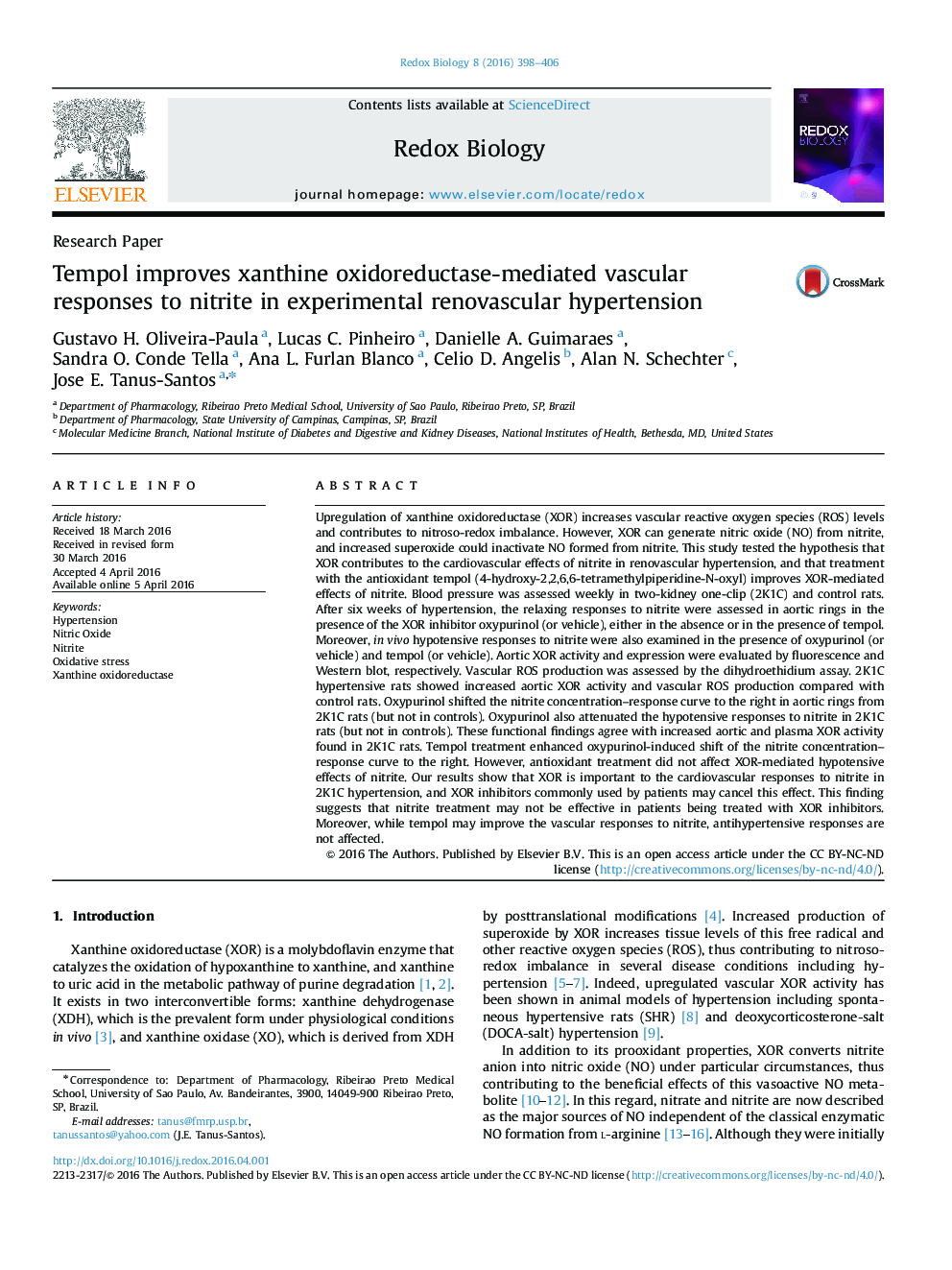| کد مقاله | کد نشریه | سال انتشار | مقاله انگلیسی | نسخه تمام متن |
|---|---|---|---|---|
| 1922886 | 1535842 | 2016 | 9 صفحه PDF | دانلود رایگان |

• Upregulation of xanthine oxidoreductase (XOR) is usually found in hypertension.
• While XOR produces superoxide, it can also produce NO from nitrite.
• This study shows that XOR mediates vasorelaxing effects of nitrite in renovascular hypertension.
• XOR inhibition prevents against the antihypertensive effects of nitrite.
• Antioxidant treatment improves XOR-mediated vasorelaxing effects of nitrite.
Upregulation of xanthine oxidoreductase (XOR) increases vascular reactive oxygen species (ROS) levels and contributes to nitroso-redox imbalance. However, XOR can generate nitric oxide (NO) from nitrite, and increased superoxide could inactivate NO formed from nitrite. This study tested the hypothesis that XOR contributes to the cardiovascular effects of nitrite in renovascular hypertension, and that treatment with the antioxidant tempol (4-hydroxy-2,2,6,6-tetramethylpiperidine-N-oxyl) improves XOR-mediated effects of nitrite. Blood pressure was assessed weekly in two-kidney one-clip (2K1C) and control rats. After six weeks of hypertension, the relaxing responses to nitrite were assessed in aortic rings in the presence of the XOR inhibitor oxypurinol (or vehicle), either in the absence or in the presence of tempol. Moreover, in vivo hypotensive responses to nitrite were also examined in the presence of oxypurinol (or vehicle) and tempol (or vehicle). Aortic XOR activity and expression were evaluated by fluorescence and Western blot, respectively. Vascular ROS production was assessed by the dihydroethidium assay. 2K1C hypertensive rats showed increased aortic XOR activity and vascular ROS production compared with control rats. Oxypurinol shifted the nitrite concentration–response curve to the right in aortic rings from 2K1C rats (but not in controls). Oxypurinol also attenuated the hypotensive responses to nitrite in 2K1C rats (but not in controls). These functional findings agree with increased aortic and plasma XOR activity found in 2K1C rats. Tempol treatment enhanced oxypurinol-induced shift of the nitrite concentration–response curve to the right. However, antioxidant treatment did not affect XOR-mediated hypotensive effects of nitrite. Our results show that XOR is important to the cardiovascular responses to nitrite in 2K1C hypertension, and XOR inhibitors commonly used by patients may cancel this effect. This finding suggests that nitrite treatment may not be effective in patients being treated with XOR inhibitors. Moreover, while tempol may improve the vascular responses to nitrite, antihypertensive responses are not affected.
Figure optionsDownload as PowerPoint slide
Journal: Redox Biology - Volume 8, August 2016, Pages 398–406